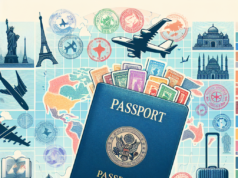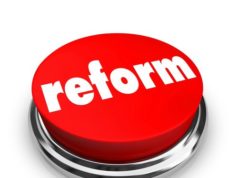
A Quick Overview on Immigration Reform
Immigration reform is a major issue in politics and affects millions of people worldwide. It deals with various complex issues surrounding the entry, stay and employment of aliens in the United States. While it has been a longstanding topic of presidential campaigns and political discourse in the US, it remains a polarizing issue that is heatedly debated among different factions in and out of government.
What is Immigration Reform?
Immigration reform is essentially the process of amending existing immigration laws or creating new ones to better regulate the movement of people across borders, giving foreign nationals more rights and protections while ensuring that the US is secure as well. It is a broad phrase that encompasses opening up avenues for skilled and unskilled workers, family reunification, naturalization and capping illegal immigration.
Why is Immigration Reform Important?
Immigration reform is vital for the US as it attracts top talent and capital from around the world, promotes economic growth and fosters a multicultural society that has come to define America. The current immigration system in the U.S. is disjointed and outdated, which makes it difficult for people to migrate legally. This leads to an influx of illegal migrants who are vulnerable to abuse and exploitation at the hands of human traffickers and migrant smugglers. They are also at a disadvantage in terms of seeking employment and healthcare.
The history of Immigration Reform
America has always been a melting pot of diverse nationalities and cultures. In the early 20th century, the US government created the first immigration laws to regulate who could enter the country. The Immigration Act of 1924 established national-origin quotas to limit the maximum permissible amount of each nationality admitted to the US. This law was repealed by the Immigration and Nationality Act of 1965, which put an end to racial biases and opened up legal immigration to all nationalities.
In 1986, the Immigration Reform and Control Act (IRCA) was passed in response to the influx of illegal immigrants from Mexico and Central America. IRCA established penalties for employers who knowingly hired undocumented workers, while providing a pathway toward legalization for those already living in America. While it did help reduce illegal immigration for a time, the law was fraught with problems in terms of implementation and enforcement.
In 2013, the Senate tried again to push for immigration reform by passing the Border Security, Economic Opportunity and Immigration Modernization Act of 2013. This bill called for a pathway to citizenship for undocumented immigrants, expansion of employment-based immigration and the allocation of additional resources to strengthen border security. However, House leaders at the time refused to take up the Senate bill, and no comprehensive immigration reform has since been passed.
Current Challenges and Issues facing Immigration Reform
Currently, immigration reform remains an issue of significant concern for the government and the society as a whole. There are several issues and challenges that must be taken into account while framing such policies:
1. Uncontrolled Border Crossings and Illegal Immigration – Over the past few years, there has been a significant increase in the number of undocumented immigrants coming to the US across the southern border. This influx has led to overcrowding at detention centers and has prompted the government to seek more funding for border security.
2. Family Separation – The Trump administration’s zero tolerance policy for illegal immigration resulted in family separation at the border and led to a public outcry. This has opened up a debate on how the US should deal with families arriving at the border.
3. Abuse and Exploitation – Illegal immigrants are at a high risk of abuse and exploitation from human traffickers and smugglers who profit off their misery.
4. Visa Backlogs – The current visa system is broken and reduces the opportunity for both family and work-based immigration that can contribute to America’s economy.
Proposals for Immigration Reform
To address these issues, several proposals have been put forward by various groups and political pundits. Here are some popular proposals that are currently being considered:
1. Path to Citizenship – Many people believe that there should be a pathway to citizenship for undocumented immigrants who are already in the country. This would give them an opportunity to come out of the shadows, get jobs, and contribute to the economy while removing the possibility of deportation.
2. Border Security – Many lawmakers believe that border security should be tightened and that more funding should be allocated to ICE (Immigration and Customs Enforcement) and Border Patrol to prevent illegal border crossings. This will also help in curbing smuggling of drugs and arms via the Mexican-US border.
3. Guest Worker Program – Creating a guest worker program would provide a useful option for American employers who need seasonal labor and workers who want to earn money back home.
4. Family Reunification – The current process for bringing family members over to the US is cumbersome, with lengthy wait times and strict qualifications. Many political authorities believe that the family reunification process should be simplified to make it easier for US citizen and legal permanent resident parents to bring their children and grandchildren to the US.
5. Dream Act – The Deferred Action for Childhood Arrivals (DACA) program, which was introduced by President Barack Obama, is sending around 800,000 young people who are brought to the United States illegally as children to deportation proceedings. The Dream Act would grant these individuals a path to citizenship, allowing them to stay and work in the country.
Conclusion
Immigration reform is a sensitive topic that is enormously complex and multifaceted. It involves trade-offs that need to be considered comprehensively in order to create meaningful policies that benefit everyone. It is important for lawmakers, pundits, and stakeholders on both sides of the aisle to work together to create a lasting solution to address the current immigration crisis. Hopefully, with effective legislation we can foster more robust growth, employment opportunities for the workforce, and shielding the vulnerable from abuse, exploitation, and detention. In summary, a comprehensive, fair and sustainable immigration policy is an essential element toward a prosperous, democratic and compassionate American society that we all desire.
Immigration Reform Background
Immigration reform is the process of changing the existing immigration policy within the United States. Immigration, both legal and illegal, is a serious concern in this country, with hundreds of thousands of immigrants entering into the country every year. Immigration reform is necessary to meet the ever changing needs of immigrants and concerns of citizens.
Immigration Law Changes
In recent years, there have been a number of immigration law changes. Some changes that involve immigration law include the structure of the naturalization test, the process necessary to apply for citizenship, and more rigid employment laws to help combat illegal immigration. It is important for an individual to thoroughly understand all reforms when considering U.S. citizenship.
Comprehensive Immigration Reform
Comprehensive immigration reform refers to the process of initiating extensive changes to existing immigration legislation. This type of immigration reform addresses many different aspects of the current immigration policy, and seeks to instate new provisions that will effectively help to improve immigration legislation.
Immigration Reform Act
There have been numerous Immigration Reforms Acts, seeking to address the problem of illegal immigration. The Immigration Reform and Control Act of 1986 is one of the most well known immigration reforms. Recently, the Immigration Reform 2009 was passed, though this bill is more widely known as the Stronger Economy, Stronger Borders Act of 2009.
Immigration Bill
An immigration bill is an Act or legislation that focuses on addressing either illegal immigration or the legal immigration system. An individual state may pass an immigration reform bill, however, this type of legislation is usually passed at a federal level. Recently, there have been numerous, controversial immigration reforms bills in the news.



























